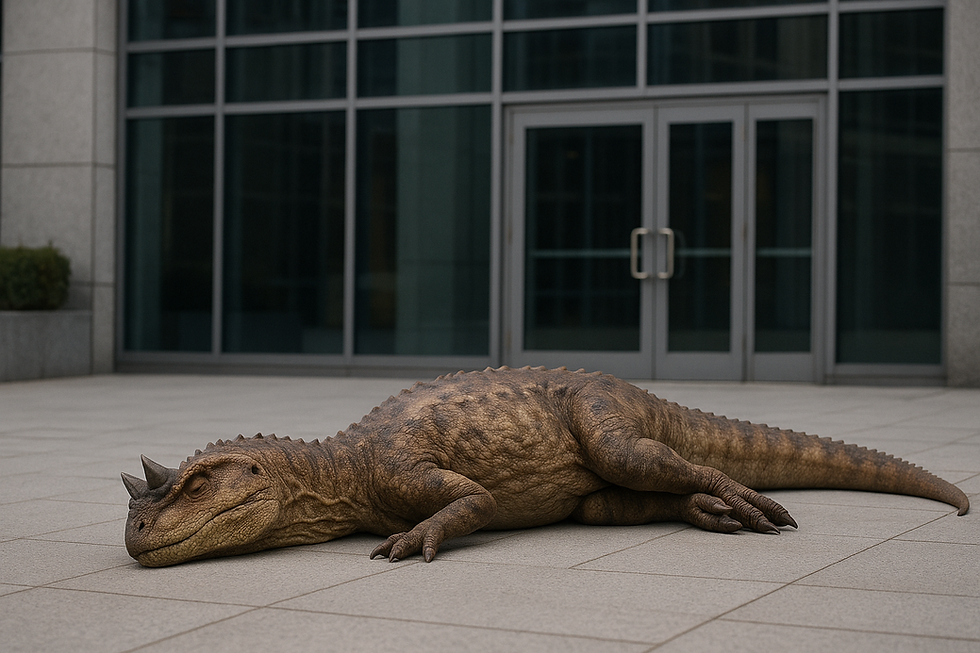Why short-term thinking is killing transformation
- Yetvart Artinyan

- Dec 20, 2024
- 3 min read

If you’re not building your future business hands-on, you’re buying someone else’s—and risking silos that may never align next to that you don’t understand it.
The illusion of speed in innovation
In today’s fast-paced market environment, companies are increasingly pressured to shorten the cycle and payback periods of non-incremental innovation activities. For example, industries like pharmaceuticals, where drug development can take 10–15 years, or renewable energy, where infrastructure changes span decades, face immense challenges in balancing long-term innovation with short-term financial goals. The focus on achieving quick wins and high ROI has shifted the approach from fostering deep exploration to demanding near-instant results. While this may please shareholders in the short term, it fundamentally undermines the exploratory and uncertain nature of breakthrough innovation. Transformative ideas, such as the development of CRISPR technology or electric vehicle ecosystems, take time to mature—sometimes decades—and cannot be rushed without sacrificing their potential impact. Transformative ideas take time to mature—sometimes decades—and cannot be rushed without sacrificing their potential impact.
The consequences of missing the trough of disillusionment
Innovation mostly follows a predictable curve: a peak of inflated expectations, a trough of disillusionment, and eventual market traction. Inflated expectations driven by media hype and trend reports often lead to an industry-wide rush where everyone invests in the same ideas at the same time. When these trends fail to deliver immediate results, companies abandon their efforts, creating the illusion that the innovation was a failure. This, however, is the most interesting phase of the innovation journey. By betting small and strategically on ideas that have sunk into the trough, organizations can reintroduce them to the market as early business models with strong backbones, eventually transforming them into high-growth opportunities.
Investing counter-cyclically with further small bets—when others have given up—can yield significant advantages. Instead of making big bets in the early stages, companies can identify and support the most promising cases during the disillusionment phase, setting the stage for long-term success while competitors lag behind.
The problem with big bets
The allure of making big bets in innovation is understandable but flawed. Big bets demand high returns, which can discourage steady investment in early-stage research and experimentation. Companies that wait for clarity in the market often find themselves outpaced by startups or competitors that quietly nurtured these trends during their less glamorous phases. By the time growth paths emerge, these players are already equipped with stable business models and market-ready solutions, leaving late movers scrambling to catch up. This is also one of the reasons why an early startup with too much money starts cash-burning instantly, as more resources are available than there should be. These startups end up betting on aspects that are not crucial to proving user demand or validating the feasibility of delivering a viable solution. Instead, steady progress through the trough of disillusionment ensures readiness for market re-entry with a stronger foundation.
When M&A becomes your only answer to stay in the game
Acquiring innovative startups or competitors may seem like a quick fix, but it often introduces significant challenges. Cultural and operational misalignments between the acquired business and the parent organization can create silos that stifle the potential of the new venture. Without a cohesive strategy to integrate and sustain the acquired innovation, these efforts frequently fail to deliver their promised value. The inability to adapt or absorb the new business model underscores a deeper issue: the lack of an active, hands-on approach to innovation.
Balancing foresight with early innovation actions
True foresight requires a balance between envisioning the future and staying actively engaged in the present. Companies must commit to sustained innovation efforts even when trends seem to vanish into the trough of disillusionment. Incremental investments in research and early-stage exploration can ensure that organizations are prepared when these trends re-emerge. It’s not about betting big; it’s about betting smart—staying in the game long enough to lead when the time comes.
Conclusion - Short-term thinking
The question is not whether you can afford to innovate, but whether you can afford not to.
Short-term financial thinking is a death knell for non-incremental innovation, alongside a brain drain of entrepreneurial thinkers. Companies that prioritize quick returns over sustained exploration find themselves forced into reactive strategies, like costly M&A or playing perpetual catch-up. The future belongs to those willing to get their hands dirty, invest steadily but smart and learn from the process. Only by staying actively engaged in shaping their next business can organizations avoid the silos and misalignments that come from merely buying innovation.
Want to read more? Visit my blog or better subscribe to my newsletter.

P.S: Do you want to know more about how to make your innovation project successful and avoiding typical pitfalls?
Extend your team and knowledge on a temporary or permanent basis: Contact me for a conversation.
Transfer the knowledge: Book one of the innovation bootcamps
Get a keynote on this topic for your organization: Book a keynote now



